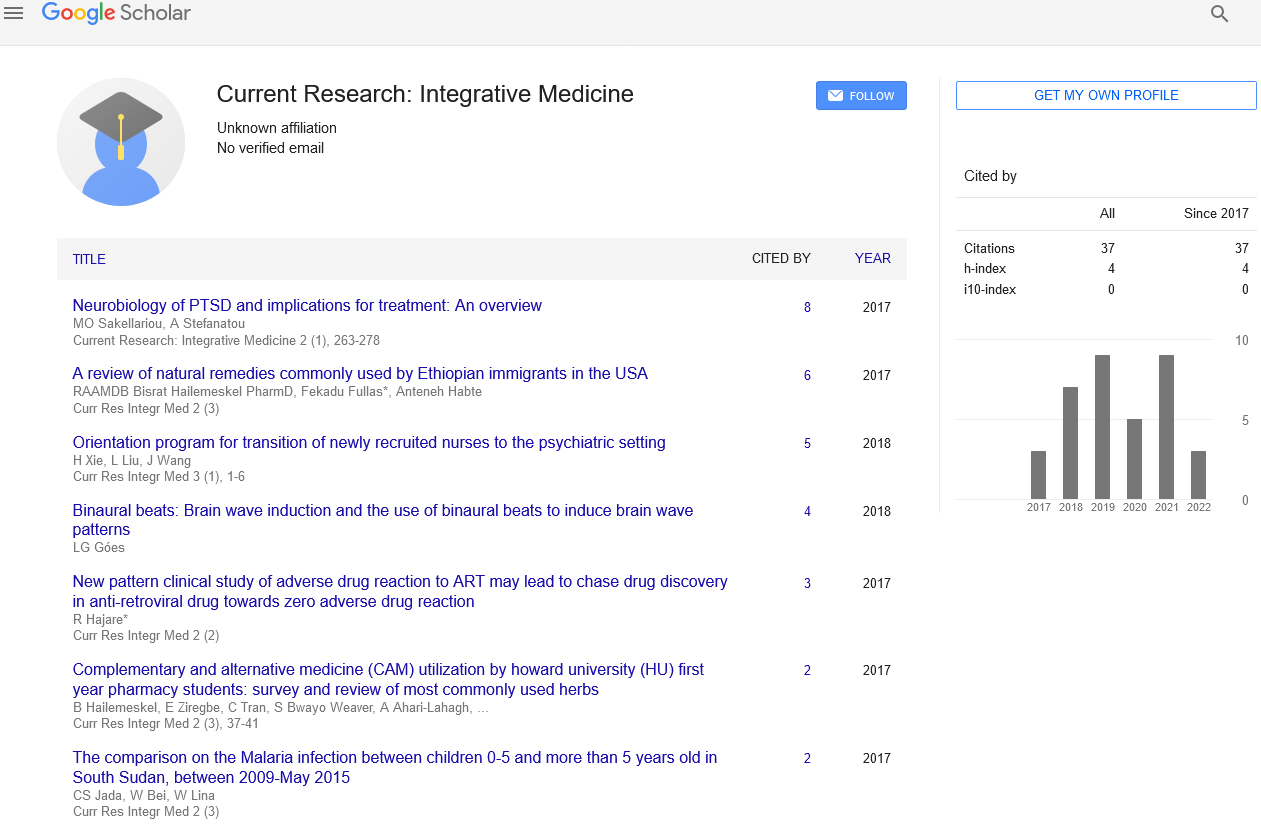The future of medicine: Advances and challenges in tissue engineering
Received: 27-Jul-2024, Manuscript No. pulcrim-24-7126; Editor assigned: 30-Jul-2024, Pre QC No. pulcrim-24-7126 (PQ); Reviewed: 06-Aug-2024 QC No. pulcrim-24-7126 (Q); Revised: 08-Aug-2024, Manuscript No. pulcrim-24-7126 (R); Published: 10-Aug-2024
This open-access article is distributed under the terms of the Creative Commons Attribution Non-Commercial License (CC BY-NC) (http://creativecommons.org/licenses/by-nc/4.0/), which permits reuse, distribution and reproduction of the article, provided that the original work is properly cited and the reuse is restricted to noncommercial purposes. For commercial reuse, contact reprints@pulsus.com
Abstract
Tissue engineering represents a transformative approach to medical science, combining principles from biology, engineering, and materials science to develop biological substitutes that restore, maintain, or improve tissue function. This article explores the core principles of tissue engineering, highlights recent advancements, and discusses the ongoing challenges in the field. By integrating stem cell technology, biomaterials, and bioprinting, tissue engineering promises revolutionary applications in regenerative medicine. However, achieving clinical success requires overcoming significant hurdles, including scalability, immunogenicity, and integration with native tissues. This review provides a comprehensive overview of the current state of tissue engineering and its future potential.
Key Words
Tissue engineering; Regenerative medicine; Biomaterials; Stem cells; Bioprinting
Introduction
Tissue engineering is an interdisciplinary field that merges biology, engineering, and materials science to develop methods for repairing or replacing damaged tissues and organs. Emerging as a promising avenue for regenerative medicine, it aims to address the limitations of traditional treatments by creating biological substitutes that can restore lost function or support new tissue growth. The fundamental objective of tissue engineering is to engineer complex, functional tissues that can seamlessly integrate with the body’s own tissues, thereby improving patient outcomes and quality of life.
The field has evolved significantly since its inception, driven by rapid advancements in technology and a deeper understanding of cellular and molecular biology. Key components of tissue engineering include the use of scaffolds—biocompatible materials that provide structural support for tissue growth—the application of stem cells, and the incorporation of growth factors to stimulate tissue regeneration. In recent years, innovations such as 3D bioprinting and advanced biomaterials have further propelled the field forward, opening new possibilities for creating custom tissue constructs.
Advancements in tissue engineering
Biomaterials and scaffolds: Biomaterials are pivotal in tissue engineering, serving as scaffolds that support cell attachment, proliferation, and differentiation. These materials can be natural or synthetic, with properties tailored to specific tissue types. Natural materials, such as collagen and hyaluronic acid, often provide a more biocompatible environment, while synthetic materials, like Polylactic Acid (PLA) and Polyglycolic Acid (PGA), offer tunable mechanical properties and degradation rates. Recent advancements have focused on developing hybrid materials that combine the benefits of both natural and synthetic components to enhance scaffold performance.
Stem cell technology: Stem cells have revolutionized tissue engineering by offering a source of cells capable of differentiating into various tissue types. Embryonic Stem Cells (ESCs) and induced Pluripotent Stem Cells (iPSCs) are particularly promising due to their pluripotent nature, meaning they can develop into nearly any cell type. Recent developments have improved the efficiency of generating specific cell types from stem cells, and advances in gene editing technologies like CRISPR/Cas9 have enabled precise modifications to enhance cell function and integration.
3D bioprinting: 3D bioprinting is an innovative technology that allows for the precise deposition of cells and biomaterials layer by layer to create complex tissue structures. This technology has the potential to fabricate tissues with intricate architectures that closely mimic native tissues. Recent progress in bioprinting techniques has made it possible to print vascular networks within tissues, a crucial development for creating larger and more functional tissue constructs.
Vascularization: One of the major challenges in tissue engineering is the creation of functional blood vessels within engineered tissues. The lack of an adequate vascular supply limits the size and complexity of tissue constructs that can be successfully implanted. Recent research has focused on developing methods to integrate vascular networks into engineered tissues, including the use of endothelial cells to form blood vessel-like structures and the incorporation of growth factors that promote angiogenesis.
Regulatory and ethical considerations: As tissue engineering progresses, regulatory and ethical considerations become increasingly important. Ensuring the safety and efficacy of engineered tissues is paramount, and regulatory bodies such as the FDA are developing guidelines for evaluating new tissue engineering products. Ethical issues related to stem cell research and the use of genetic modification technologies also need to be addressed to ensure responsible advancement in the field.
Conclusions
Tissue engineering stands at the forefront of regenerative medicine, offering remarkable potential for repairing and replacing damaged tissues and organs. The integration of advanced biomaterials, stem cell technologies, and 3D bioprinting has significantly advanced the field, making it possible to create complex tissue constructs with greater precision and functionality. Despite these advancements, several challenges remain, including issues related to scalability, immunogenicity, and effective vascularization. Addressing these challenges will be crucial for translating tissue engineering innovations from the laboratory to clinical practice.
Future research will likely focus on overcoming these hurdles and further refining tissue engineering techniques to enable the development of fully functional tissue replacements. As the field continues to evolve, it holds the promise of revolutionizing medical treatments and improving patient outcomes, ultimately paving the way for a new era of personalized and regenerative medicine.






